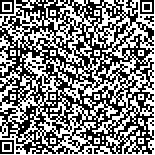| 引用本文: | 贾慧霞,张华,张成龙,何毛贤,刘文广.法螺G型溶菌酶重组蛋白的原核表达及抑菌活性探究[J].海洋科学,2022,46(10):32-42. |
| |
|
| |
|
|
| 本文已被:浏览 712次 下载 1901次 |

码上扫一扫! |
|
|
| 法螺G型溶菌酶重组蛋白的原核表达及抑菌活性探究 |
|
贾慧霞1,2, 张华1,3, 张成龙4, 何毛贤1,3, 刘文广1,3
|
|
1.中国科学院热带海洋生物资源与生态重点实验室, 广东省应用海洋生物学重点实验室, 中国科学院南海海洋研究所, 广东 广州 510301;2.中国科学院大学, 北京 100049;3.南方海洋科学与工程广东省实验室(广州), 广东 广州 511458;4.三沙市海洋和渔业局, 海南 三沙 573199
|
|
| 摘要: |
| G型溶菌酶(G-type lysozyme,G.lys)是一种富含半胱氨酸的天然免疫因子,在无脊椎动物的免疫防御过程中起重要作用。本研究旨在通过揭示法螺(Charonia tritonis)G型溶菌酶(CtG.lys)重组蛋白的抑菌功能,为进一步认识法螺的分子免疫机理及病害防治提供新思路。首先对CtG.lys序列进行了分析,利用实时荧光定量PCR检测CtG.lys的组织分布,然后以pGEX-4T-1为表达载体,构建重组质粒pGEX-4T-1-CtG.lys,进行重组蛋白表达,并检测了重组蛋白的抑菌活性。结果显示:1)CtG.lys cDNA的5'非翻译区(UTR)为66bp,3'UTR为186bp,开放阅读框为789bp,编码262个氨基酸,有1个可溶性转糖苷酶(SLT)结构域(72~255aa),包含6个半胱氨酸残基和3个酶活性催化位点(Glu72、Asp85、Asp96);2)多序列比对及系统发育分析表明,CtG.lys与亲缘关系较近的福寿螺G型溶菌酶氨基酸的同源性最高;3)CtG.lys在所有被检测组织中均表达,其中在肝脏、外套膜表达量较高;4)16℃,0.5mmol/L IPTG诱导表达10h后,重组蛋白在上清液和包涵体均表达分子量约为51.91kDa,纯化后得到浓度为1.2mg/mL的重组蛋白;5)抑菌实验表明,重组蛋白pGEX-4T-1-CtG.lys具有抗金黄色葡萄球菌Staphyloccocus aureus、藤黄微球菌Micrococcus luteus、施罗氏弧菌Vibrio shilonii的活性,对革兰氏阳性细菌的抑菌作用大于革兰氏阴性细菌。研究结果为进一步解析法螺免疫防御的分子机理提供了参考数据和科学依据。 |
| 关键词: 法螺 G型溶菌酶 原核表达 抑菌活性 |
| DOI:10.11759/hykx20210926001 |
| 分类号:S968 |
| 基金项目:国家自然科学基金项目(42176129);中国科学院战略性先导研究项目(XDA13020206);南方海洋科学与工程广东省实验室(广州)人才团队引进重大专项(GML2019ZD0402) |
|
| G-type lysozyme prokaryotic expression and antibacterial activity of the Charonia tritonis recombinant protein |
|
JIA Hui-xia1,2, ZHANG Hua1,3, ZHANG Cheng-long4, HE Mao-xian1,3, LIU Wen-guang1,3
|
|
1.Key Laboratory of Tropical Marine Biological Resources and Ecology, Chinese Academy of Sciences, Guangdong Key Laboratory of Applied Marine Biology, South China Sea Institute of Oceanology, Chinese Academy of Sciences, Guangzhou 510301, China;2.University of Chinese Academy of Sciences, Beijing 100049, China;3.Southern Marine Science and Engineering Guangdong Laboratory(Guangzhou), Guangzhou 511458, China;4.Sansha Marine and Fisheries Bureau, Sansha 573199, China
|
| Abstract: |
| G-type lysozyme (G. lys) is a natural immune factor with rich cysteine content, which plays an important role in invertebrate immune defense. This study aimed to further understand the molecular immune mechanism of Charonia tritonis and to provide new ideas for preventing disease in C. tritonis by studying the antibacterial function of recombinant protein G-type lysozyme in C. tritonis (CtG.lys) . The sequence characteristics of CtG. lys were analyzed, and real-time fluorescent quantitative polymerase chain reaction analysis was used to detect the CtG. lys tissue distribution. Next, the pGEX-4T-1-CtG.lys recombinant plasmid was constructed using the pGEX-4T-1 expression vector to express the recombinant protein and detect its antibacterial activity. The results showed: 1) The 5' untranslated region (UTR) was 66 bp, the 3' UTR was 186 bp of the CtG.lys cDNA; the open reading frame was 789 bp and encoded 262 amino acids; CtG. lys contained one soluble transglycosidase (SLT) domain (72-255 aa), six cysteine residues, and three enzyme active catalytic sites (Glu72, Asp85, and Asp96); 2) multiple sequence alignment and phylogenetic analyses showed that the CtG. lys amino acids had the highest homology with a closely related G-type lysozyme; 3) CtG. lys was expressed in all tissues tested and was highly expressed in the liver and mantle; 4) after 10 hours of induced expression with 0.5 mM IPTG at 16℃, the average molecular weight of the recombinant protein expressed in the supernatant and inclusion bodies was 51.91 kDa. A 1.2 mg/mL recombinant protein concentration was obtained after purification; 5) the antibacterial activity test showed that the pGEX-4T-1-CtG.lys recombinant protein had antibacterial activities against Staphyloccocus aureus, Micrococcus luteus, and Vibrio shilonii, and the bacteriostatic effect on the Gram-positive bacteria was greater than that of Gram-negative bacteria. The results of the study will provide a reference and a scientific basis for further analysis of the molecular mechanism of immune defense in C. tritonis. |
| Key words: Charonia tritonis G-type lysozyme prokaryotic expression antibacterial activity |
|
|
|
|
|
|
